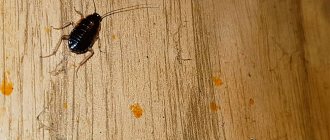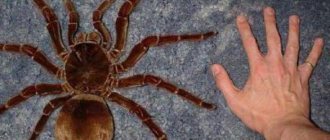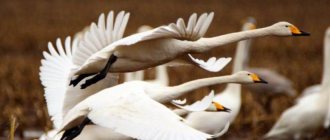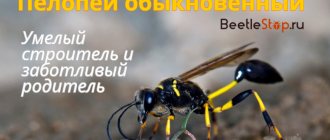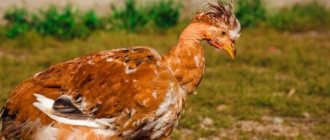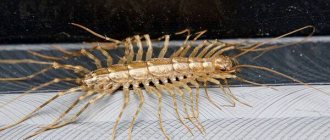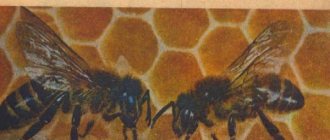Predatory insects eat other insects, called prey, and are quite active because they have to chase their prey. Carnivorous insects feed on many harmful arthropods and are an important part of the biome. The most common insect predators are the beetle, wasp and dragonfly families, as well as some flies such as the flower fly. Other arthropods, such as spiders, are also important predators of insect pests. Some predators feed on only one or a few types of prey, but most hunt a variety of insects and sometimes even each other.
Seven-spotted ladybird
The pronotum of the cow is black with large white spots on the sides. There are seven black spots in total, three on each wing cover and one central spot at the base of the pronotum.
Common lacewing
Adults have long slender bodies, antennae and two pairs of large wings with a reticulate vein. They pierce the victim with large sickle-shaped jaws and feed on biological fluids.
Hoverfly
Preys primarily on aphids and is an important natural regulator of aphid populations (garden pests). Adult hoverflies imitate bees, bumblebees, wasps and sawflies.
Krasotel fragrant
It is nocturnal and hides under logs, rocks or in soil crevices during the day. Runs away quickly when in danger. Can fly, but rarely does so. Attracted by light at night.
Common earwig
It is nocturnal, spending the day under leaves, in cracks and crevices and other dark places. Depends on the weather. A stable, minimally high temperature stimulates activity.
Ant
Black or brown ants are easily recognized by their narrow waists, bulbous abdomens, and ulnar antennae. Most of the time when you watch them, you see workers, all of them are females.
Jumping spider
Easily distinguished by the four large and four smaller eyes on the top of the head. Excellent vision allows them to hunt in the same way as cats, spotting prey at long distances by sneaking and jumping.
Garden ground beetle
Lives in eurytopic forests, found in open areas. Active at night and hunts earthworms, etc. on the forest floor. Recognizable by rows of golden indentations on the wings.
Ground beetle
They fly in May–June and are active at temperatures from 20 to 26°C. When it is above 36°C, they die. During drought, they burrow into the ground to a depth of 40 cm, resuming activity after rains and when the temperature drops.
Dragonfly
They catch prey by grabbing it with their paws. The main food is mosquitoes. The effectiveness of hunting has been proven by a study from Harvard University. Dragonflies caught 90 to 95% of the insects released into the vivarium.
Mantis
Uses pointed front paws to catch live insects. When an alarmed mantis takes on a “threatening” appearance, it raises and rustles its wings and displays warning coloration.
Grasshopper green
Lives in trees and meadows dotted with bushes, eats vegetation and other insects. Females lay eggs in dry soils and use long, curved ovipositors.
Wasp
The mouth parts and antennae have 12-13 segments. Wasps are predatory parasites, they have a sting that is easily removed from the victim, with a small number of barbs. A narrow “waist” attaches the belly to the ribcage.
Bug
They attack unwanted plants and feed on eggs, larvae and adult harmful insects. Bugs biologically control weeds and pest insect populations.
Water strider bug
They run in groups along ponds and streams. The bodies are thin, dark, more than 5 mm long. They use their short front legs to catch insects and eat them on the surface of the water. When there is little food, they eat each other.
Rider
The beneficial arthropod feeds on the eggs, larvae, and sometimes pupae of many insects, including aphids, caterpillars, butterflies, sawflies, leaf pliers, bugs, aphids, and flies.
Fly-ktyr
Known for its predatory behavior and appetite, it feeds on a huge number of arthropods: wasps, bees, dragonflies, grasshoppers, flies and spiders. Maintains insect population balance.
Scolopendra
The voracious predator feeds on invertebrates such as crickets, worms, snails and cockroaches, and also preys on lizards, toads and mice. This is a favorite insect for entomologists' vivariums.
Steppe grasshopper
The giant predator is equipped with sharp spines along the entire length of its front legs and strong jaws. He waits, does not move and opens his front legs wide, as if in a false friendly hug.
Trips
Small insects up to 3 mm feed on plant tissue (flower heads), mites and small insects (including other thrips). The wings are thin and stick-like with a border of long hairs.
Rove beetle
It is found in humid environments, but not in open waters, in forest litter, in fallen decomposing fruits, under the bark of rotting trees, plant materials on the banks of water bodies, in manure, carrion and nests of vertebrate animals.
Who are insects
Insects are a class of invertebrate arthropods that have chitinous bodies. They differ in structure, shape, size and lifestyle.
Life cycle.
All of them go through a life cycle with complete or incomplete transformation. The complete transformation cycle consists of 4 stages:
- egg;
- larva;
- chrysalis;
- adult (imago).
In an incomplete cycle, there is no pupal stage.
| Body structure | Three sections: head, chest and abdomen. Each segment has its own part. |
| Exoskeleton | The outer dense cover of the body and limbs is chitinous. There are growths, thorns, folds, hairs. |
| Colors | Diverse. They can be structural, bright, metallic, with patterns and stripes. |
| Head | With antennae, oral limbs, organs of vision. |
| Breast | It consists of three segments, the legs are attached to the knees and hip. |
| Wings | Two pairs, with a frame and thin fabric, are reinforced with veins. |
| Abdomen | Consists of a number of segments with appendages. |
Garden ant queen
In the photo: Ants mating
It's hard to imagine, but females of common garden ants can live up to 20 years! Have you probably seen ants with wings? It turns out that these are young females and males of ants who leave their anthill to mate during the mating season.
Females are larger, males are smaller. The male’s task is to transfer his genetic material to the female, which she will keep for the rest of her life. After fertilization, females shed their wings and establish new colonies, while males self-destruct.
Types of insects
Insects are the most numerous representatives of the animal class. In the selection there are some species that are the most common and often found.
Lepidoptera
These are butterflies familiar to everyone. The name comes from the fact that the wings have small scales. They provide strength and affect color and pattern.
ladybugs
These are small, egg-shaped bugs with a small head and a short body. Insects are twofold - beneficial killers of garden insects and carriers of disease or infection.
Bees
A relatively small family of flying representatives. They are useful, feeding on pollen and nectar, thereby promoting pollination and productivity. Several domesticated species produce honey.
Wasps
Another flying insect that does not have a special classification, but has a number of features - they bite and sting painfully. Such neighbors are undesirable for people.
Lice
Parasitic insects that live on the skin of humans. They carry a large number of diseases and cannot live for long without food.
Grasshoppers
This is a subspecies of insects with wings that cannot fly. They are often painted to match the color of their habitat, thus camouflaging themselves. The food varies from plant pests to predators.
flies
Various representatives of flying dipterans. Distributed everywhere, but prefer warm climates. They cause harm, bite and carry diseases.
Mosquitoes
Blood-sucking insects that can also feed on plant debris, but drink blood to reproduce. They are common, carriers of infection and sting painfully and cause itching.
Fleas
A large group of blood-sucking parasites that live on various mammals. They bite, cause itching, and transmit diseases.
Ants
A large family of Hymenoptera, but not using wings as unnecessary. A clear hierarchy and a specific role for everyone is a distinctive feature.
Cockroaches
The most ancient creatures with an extraordinary ability to survive and adapt to various conditions. Pests, carriers of diseases and infections.
Flying arthropods
Some insects fly through open windows and doors and settle in the house for a long time. They can be seen with the naked eye and a fairly loud buzzing sound can be heard.
Flies . According to recent research, most flies sleep at night and doze during the day. The fly has a complex eye structure. It consists of thousands of lenses, which gives her the ability to see in many directions at the same time. Sensitive villi on the fly's body allow it to hear sound vibrations. Their taste buds are on their paws. When choosing food, flies moisten it with saliva and absorb it. Then they burp it to soften it, and then suck it up with a sponge-like mouth. They eat constantly, as well as mate. Flies live for about three weeks.
Wasps . They often make their nests in people's homes. Usually these are attics, balconies, loggias, verandas. They build nests from chewed wood and fiber. Wasps often drink water as well as sweat from people's skin. Every year about 1.5 thousand people die from their bites. But nevertheless, they provide benefits by eating other insects.
Moths are a well-known household pest, a lepidopteran insect. Moth larvae eat not only fabric, but also products of plant origin: grains of wheat, corn, barley, oats, and also eat flour and even dry bread. Moths are known to enter the home when attracted to bright light. And when they get into a home, they settle in it forever.
The role of insects in life
In nature, everything is connected and harmoniously arranged. Therefore, each insect has a specific role. It doesn't always benefit people.
Harmful insects
Depending on your lifestyle, there are insects that only cause harm. They can feed on human waste products, plant juices and fruits. Here are some examples:
- whitefly Little white flies are actually nasty pests that come in large numbers;
- goldentail A pest of fruit trees, the hairy caterpillar is also harmful;
- silverfish. Insects that spoil supplies, paper products, and food. They don't bite people.
Relatively harmful
This is a series of insects that can act in two ways. They often cause harm, but they are also useful in their way of life. So, the most striking examples of this are harmful insects that can bite or sting people, but at the same time protect the area from pests:
- mosquito. An insect similar to a mosquito and also feeding on blood. But it processes organic matter, thanks to which it enriches the soil;
- scolopendra. They bite painfully and cause irritation. But they hunt flies, mosquitoes and fleas;
- crickets. Relatively safe vegetarians, which, if widely distributed, can ruin the harvest.
Useful
Contrary to misconceptions, not all insects harm people. There are a lot of useful inhabitants of the house and garden. Although the appearance of these prominent representatives may be surprising:
- flycatcher An unpleasant-looking insect that rarely bites and does not spoil food. Destroy a lot of small pests;
- mantis. A predator that helps destroy pests on the site;
- Daphnia. Small crustaceans that live in stagnant bodies of water filter the soil and are food for fish.
Cicadas
Among more than 800 species of different cicadas, there is only one (Magicicada septendecim), the females of which are truly long-lived in the insect world. Some of them can live up to 17 years. But don’t be surprised, the cicada spends most of its time underground, feeding on substances from the root system of plants. And only the last 5 weeks of the cicada’s life are spent on the ground and in the air.
Different in socialization
All insects are conventionally divided into two categories: solitary and social. According to the names, they either live on their own and interact only in the case of reproduction, or they exist in a colony, family, or clusters.
Social insects
This includes those who live in an organized family and their own hierarchy. These species have a structure and their own occupation for each family member.
Paper wasps. This species has a nest that is built by workers, a queen that is responsible for reproduction, and animals that feed the offspring.
Termites. They build homes and live in colonies, feed on wood and pose no danger other than possible destruction.
Solitary insects
Those that do not live in colonies or families. They prefer to live alone and not meet others like themselves unless necessary.
Earwigs
After mating, the mother carefully arranges a place of residence and remains there until the babies are able to set out on an independent life. They don't touch anymore.
Scorpion
This arachnid is a prime example of loners. They only meet other representatives of the species when mating is necessary. And even then, the male may suffer.
What types of domestic comas occur?
Among the wide variety of creatures that inhabit our planet, most are important. Tim, who is familiar with their everyday life and sounds, knows that these are unique things that impress with their beauty, sophistication, ornateness and practicality. Today's cultivation of any of them in household minds is an inconvenient and greedy activity that requires love and respect for these marvelous creations of nature. There are different types of species and classifications: brown and ugly, flying and swimming, mosquitoes of our region and exotic, etc. Skin representatives of the groups have their own name, peculiarities of behavior, gastronomy chnі similar, i іdminі rice.
Among them are species that are generally considered to be harmless. It’s enough to grow their home in order to have mercy or to marry, or to live in the garden or on country plots, to only have time to catch up, even if people are innocently aware of them, not understanding the obvious coritis among these innocents ist. Do you know that without comas, humanity can sleep for more than two months? I'm not a person, we're looking at the most popular among them.
be careful
According to statistics, more than 1 billion people are infected with parasites. You may not even realize that you have become a victim of parasites.
It is easy to determine the presence of parasites in the body by one symptom - bad breath. Ask your loved ones if your breath smells in the morning (before you brush your teeth). If yes, then with a 99% probability you are infected with parasites.
Infection with parasites leads to neuroses, fatigue, sudden mood swings, and later more serious diseases begin.
In men
parasites cause: prostatitis, impotence, adenoma, cystitis, sand, kidney and bladder stones.
Among women
: pain and inflammation of the ovaries. Fibroma, myoma, fibrocystic mastopathy, inflammation of the adrenal glands, bladder and kidneys develop. As well as heart disease and cancer.
We would like to warn you right away that you do not need to run to the pharmacy and buy expensive medications, which, according to pharmacists, will eradicate all parasites. Most medications are extremely ineffective, and they also cause great harm to the body.
Control measures without chemicals
Before calling an exterminator or spraying chemicals, first determine what attracted the uninvited guests. Insects sneak into apartments and houses for food.
A poorly closed can of cereal will become a bait for food moths. A grayish coating and small pellets under the contents indicate larvae in the container. If you forget about dirty dishes, don’t close the trash can, and an invasion of ants and cockroaches cannot be avoided. Water that stagnates in a vase is a “magnet” for midges and mosquitoes. Flies and wasps become regular guests in apartments where there are no screens on the windows.
Having determined the cause of the appearance, it is worth choosing a method for a specific type. Flying insects will disappear after spraying a mixture of essential oils such as:
• tansy;
• lavender;
• mint;
• lemon balm.
Sealant or tape will help prevent crawling guests from entering. They need to close all the ways, like cracks and holes in the walls, near the windows.
Having destroyed the insects that have already entered the house, it is important to prevent a recurrence of the invasion. Warm water mixed with table vinegar and lemon balm oil will help with this. The solution should be used to rinse the floor and wipe the surface of the table and kitchen cabinets.
To prevent insects from flying around the house, the window is decorated with a pot of geraniums and basil. Flies will stop rushing inside if you wipe the frames with infusion of bay leaves. Mint, which can be placed on the windowsill, also helps protect against flying irritants.
By hiding it in kitchen cabinets, you will be able to protect food from ants. The main thing is not to overdo it with pennyroyal, which is dangerous for pets. Bunches of wormwood hung indoors will not only decorate it, but will also repel cockroaches.
Reliable insect traps
If purchased funds fail, you can make a trap with your own hands. To get rid of mosquitoes, you need a plastic bottle. Having cut off the upper part, it is turned over and secured in the lower part. Pour a glass of sugar syrup into the resulting funnel and add a spoonful of yeast. The trap is placed on the window.
Need to get rid of cockroaches forever? A trap made of flour and alabaster will cope with the task. The mixture should be poured where mustachioed guests appear most often. Didn't the kids finish the jam? Don't scold them, they can be turned into a trap for wasps. Pour water into the jar and mix the contents. The container must be closed with a plastic lid with holes made with a knife.
If the prepared fly stickies have dried out again, they should be replaced with a tin can of melted rosin. To 100 g of product you need to add 30 ml of vegetable oil and honey.
Ants are repelled by ground coffee, which should be scattered in places where insects accumulate. You can also pour corn flour there, which they do not digest.
Creating traps or arranging plants takes a little time, but you will be able to get rid of insects for a long time. The owners will only have to update the traps in the summer.
Pied beetles
With their shape and color, pied beetles resemble a bee or an ant, which is why they are called bee beetles or ant beetles.
This predator is invaluable for ornamental and fruit gardens, as it settles in trees and preys on bark beetles, borers and other dangerous pests. Their larvae live under the bark, move along the passages made by pests, and mercilessly destroy their larvae.
Ant
It’s not for nothing that forest ants are called little workers - they protect plants from caterpillars and larvae, slugs, spider mites and other insects. The inhabitants of one anthill control an area of about 0.2 hectares. Also, thanks to the activity of ants, the content of potassium and phosphorus in the soil increases.
It is worth monitoring the number of ants, because they can contribute to the proliferation of aphids
These insects are also used to make medicine. Formic acid is used as a stimulant and astringent. Some are even treated with ant bites. But here you need to be careful, because the individual reaction of the body can be negative.
Lacewings
The lacewing is also probably familiar to everyone: it is a cute, ballet-like graceful green or beige insect that often lands on the windows of houses in the summer. They have a characteristic smell of mice, which scares away enemies from them.
Despite its innocent, angelic appearance, the lacewing is one of the most bloodthirsty predators. This is a nocturnal hunter; during the day it rests, and at nightfall it goes to deal with aphids. It is the lacewing that is artificially grown to protect plants in greenhouses, including rare plants in greenhouses.
Look at her face.
It is an incredible aggressor: one larva devours more than 500 adult aphids during its larval life; and one female lacewing lays more than 400 eggs!
Nadanna
Brown larvae can be seen in aphid plantings. This is a lacewing. She doesn't look very pretty and, of course, falls under attack.
